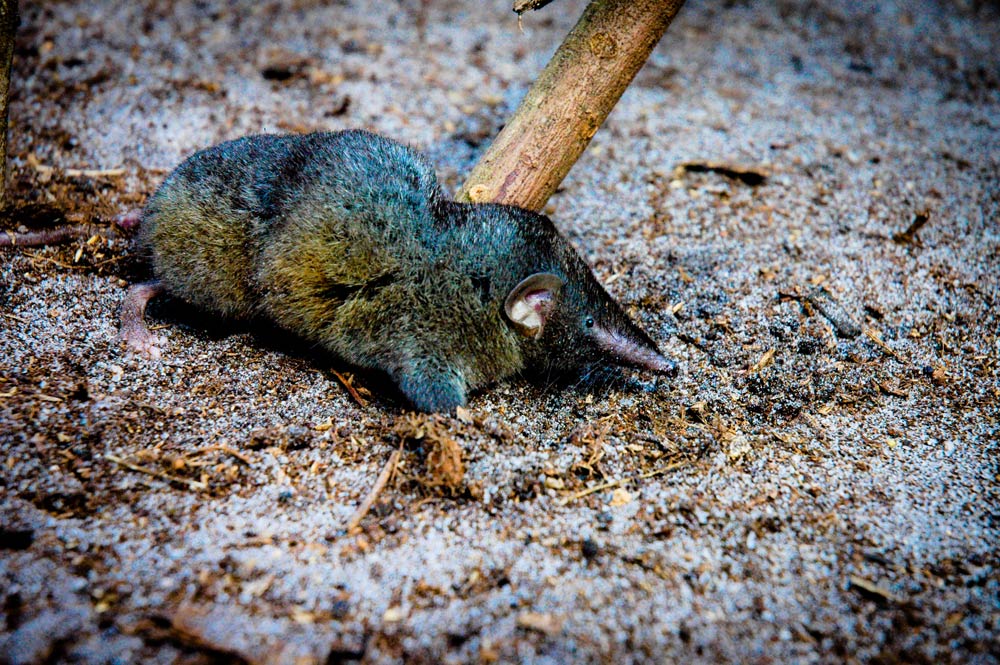Ratlike Creature's Bizarre Backbone Baffles Scientists

The hero shrew — a small, ratlike animal with a bizarrely strong and oddly shaped backbone — has mystified scientists since it was first described more than 100 years ago. Now, a newly discovered species of hero shrew may help researchers piece together why the animal evolved to have such a peculiar spine and what purpose the hardy backbone serves now.
The hero shrew's unique backbone gives the animal extraordinary strength, said lead study author William Stanley, collections manager of mammals at The Field Museum in Chicago. The animal's lower back has 10 to 11 lumbar vertebrae (the bones that make up the lower spine) that jut out and interlock with one another, he added. In comparison, humans have five lumbar vertebrae between the rib cage and the pelvis that help support the weight of the body.
"The hero shrew has the most bizarre mammalian backbone in the world," Stanley told LiveScience.
For more than 100 years, the hero shrew was classified as only one species, but a new species has been discovered in central Africa that has an expanded backbone and only eight lumbar vertebrae. Although the spine appears to be slightly different from that on the original hero-shrew species, molecular evidence indicated the two are closely related, the researchers said. [In Photos: Mammals Through Time]
Where did it come from?
Regular shrews do not have the same strong backbone as the heroes do, and scientists have been unable to explain when or why the hero shrew developed such a strange spine. The newly discovered species of hero shrew could represent an evolutionary stepping stone, Stanley said.
"Often, when we see such bizarre morphology and there's nothing in between that morphological change and everything else, people hypothesize that this change happened very quickly and was very significant in a short amount of time," he explained. "Our discovery has characteristics that suggest it is a transitional form — an intermediate between the standard shrew and the hero shrew."
Get the world’s most fascinating discoveries delivered straight to your inbox.
Even if this discovery does not solve the hero-shrew mystery, the new species may shed light on how the animal's expanded backbone developed, Stanley said. [That's Odd! The 10 Weirdest Animal Discoveries]
Researchers are unsure precisely how strong the hero shrew's spine is, but a local resident once demonstrated the creature's unusual strength by standing and balancing on its back. When the man stepped off, the shrew reportedly walked away completely unharmed, said study co-author Lynn Robbins, a professor of biology at Missouri State University in Springfield, Mo.
"So, a 140-pound person, at least, could stand on the shrew and not damage it," Robbins told LiveScience.
A shrew's gotta eat
In the 1970s, Robbins spent time in central Africa, where hero shrews are typically found. When he was there, he tried to glean details about the animal's habitat and behavior.
Explorers first noticed the hero shrew in the eastern Congo in the early 1900s, Stanley said. At the time, local residents spoke about the animal's almost mythical status, and claimed that they wore pieces of hero-shrew fur or bone as a protective talisman when they would go into battle.
Locals told Robbins that hero shrews had been seen in swampy areas with palm trees, where the residents went to collect palm nuts. When he visited these sites, he watched as the residents pulled back the tough, leafy bases of the palm trees to gather the seeds. He hypothesizes that hero shrews use their bodies to perform similar maneuvers in order to reach the grub that's concentrated in these areas. (Previously, scientists hypothesized that the hero shrew's strong spine protects it from falling rocks or logs.)
"I describe the possibility that they use their body as a lever to push up these leaf bases, bending and prying them apart so they can access all the invertebrates and grubs there," Robbins said. "There's a large muscle attachment that goes on their head and across the spine that could explain how they can get into these tight situations and not be crushed by the pressure as they exit the feeding area."
Robbins and Stanley stress that they have no definitive proof that hero shrews feed in this way, and scientists have yet to witness the animals scavenge in the wild. Nonetheless, the scientists hope their work will inspire future studies of the peculiar creature.
On a larger scale, the new finding demonstrates how little is known about the animals that inhabit the planet, Stanley said.
"People think the age of discovery is over — that we might discover new species of bacteria but when it comes to mammals and vertebrates, we've pretty much got it figured out," he said. "That is absolutely not the case. We are finding new species all the time."
The detailed findings of the study were published online today (July 23) in the journal Biology Letters.
Follow Denise Chow on Twitter @denisechow. Follow LiveScience @livescience, Facebook & Google+. Original article on LiveScience.com.

Denise Chow was the assistant managing editor at Live Science before moving to NBC News as a science reporter, where she focuses on general science and climate change. Before joining the Live Science team in 2013, she spent two years as a staff writer for Space.com, writing about rocket launches and covering NASA's final three space shuttle missions. A Canadian transplant, Denise has a bachelor's degree from the University of Toronto, and a master's degree in journalism from New York University.


